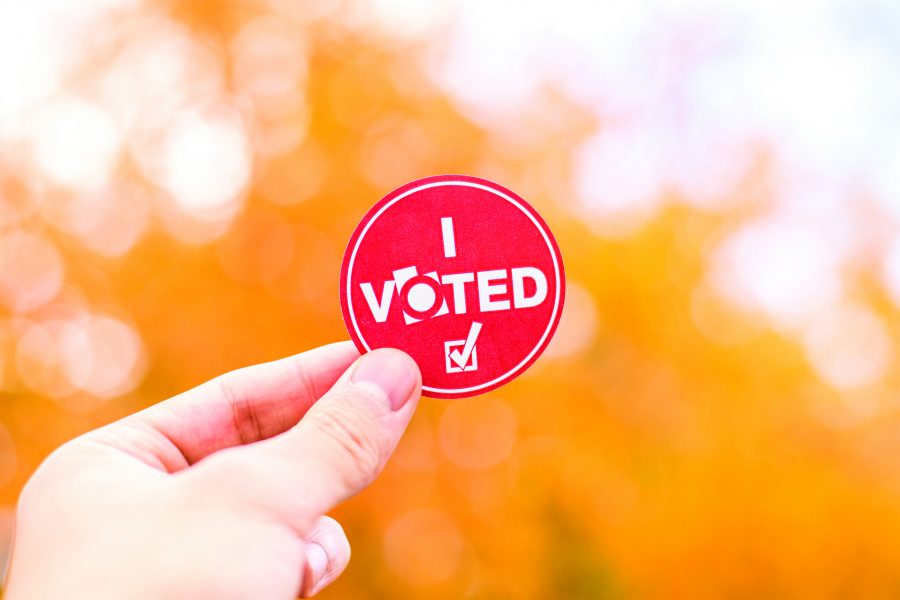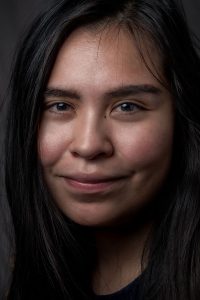Grassroots and Individual Donors Work For Salt Lake’s Mayoral Candidates in Historic Runoff
People cast their votes during the Midterm Elections 2018 at the Salt Lake County Building in Salt Lake City, UT on Tuesday Oct. 23, 2018. (Photo by Curtis Lin | Daily Utah Chronicle)
September 6, 2019
In November, Salt Lake City will decide who will be elected mayor. In a historic race, Erin Mendenhall and Luz Escamilla are making clear their vision to serve the residents of the growing city. It’s a first for Salt Lake to hold a general election where two female candidates are in a runoff.
While the candidates are knocking on doors and branching out to voters, they’re also focused on making sure their finances are well-run and clean.
As the two-time elected councilwoman and current chair of the Utah Air Quality Board, Mendenhall has raised $121,159 so far. Escamilla, the current Democratic state senator for the city’s Glendale and Rose Park neighborhoods, has raised $206,659.
An estimated $1.5 million were raised for campaigns altogether by the eight candidates throughout the primaries. The intensity and pressure of raising funds has only grown for both candidates as they compete to capture the attention of the Salt Lake voters.
The philosophical approach to campaign finance has been important for elections within and beyond city lines in the past. Candidates like Sen. Bernie Sanders and Elizabeth Warren have had individual contributors largely fueling their campaigns, generating a large-scale trend for other candidates to employ. Refusing super PAC money is also another popular decision to make when running.
However, elections on a municipal level are much different than presidential races as contribution limits vary across the board. For example, individual contributors can’t donate beyond $2,800 to presidential campaigns according to the limits set by the Federal Election Commission. For Salt Lake’s mayoral race, one can contribute up to $3,560.
Escamilla has mentioned that her campaign holds the largest amount of donors under $100 and that is accomplished by “heavily and actively spending time making phone calls and asking for support.”
Both candidates are proud of using grassroots organizing as their main political strategy, meaning community members are the bedrock of the campaign and are encouraged to get involved with their politics to share concerns about local matters, not only with their voice but their vote.
“We didn’t run a marketing effort,” Mendenhall said. “It was a targeted voter outreach strategy we used.”
For Escamilla, she believes her message for voters resonated with them and incorporated ideas such as the “inclusiveness of a solid city that’s prosperous for all and the ability to work and collaborate as well,” she said.
Mendenhall points out she understands what is needed for Salt Lake and its residents to achieve its platform while recognizing the largely liberal city stands out from the red state. “I understand the financing, I understand difficult community conversations and how to stay at it,” she said.
Both are proud their candidacies aren’t self-funded compared to other candidates in the recent primary like David Ibarra and Jim Dabakis, who used their wealth to build their competitive profile in the race, a popular approach for candidates at all election levels.
“I’m glad to be running a race that is transparent,” Mendenhall said. Likewise, Escamilla has also commented, “We’re transparent, you can see who contributes to us.”
PACs like Utah’s Health Care Association and Zions Bank — Escamilla’s employer — have contributed to her campaign while PACs like the International Brotherhood of Electrical Workers and Governor’s Leadership, Gov. Herbert’s political committee, made donations to Mendenhall.
PACs are committees created by entities not classified as an individual that donate towards campaigns at every level. Labor unions, businesses, member organizations, and interest groups can create these committees and tend to help mobilize candidates since they often contribute with hefty donations.
The only PAC that has contributed to both campaigns is the Utah Association of Realtors Political Action Committee. Escamilla has received $1,200 and Mendenhall, $3,200. The PAC could not be reached before publication after multiple attempts to contact the office.
Though all the donor records are available through the city’s election website, concerns about outside PACs who spend money on billboards, TV commercials and mailers — either denouncing or endorsing the candidate — is a matter that both campaigns are aware of. Free billboard space and TV commercials endorsed Escamilla, even though she says she is not familiar or associated with the PACs at all.
Weeks ago, a mailer depicted both current candidates as sheep by People4SLC, a PAC that has received criticism for divisive tactics and falsehoods in the race.
Morgan Lyon Cotti, associate director of the Hinckley Institute, says that young voters should understand and press for full transparency in regards from funding for candidates running their campaigns. “Ensuring that campaign finance is fair is a core part of trust in our institution,” Cotti said.
According to a 2017 Pew Research Center poll, only 12% of U.S. adults say they have donated to a candidate, indicative that voter engagement through contributions has yet to reach a similar nationwide attention that issues like voter registration have gained.
For voters at the University of Utah looking at this municipal election, the presidential race in 2020 and their future political lives, Cotti says engaging with the idea of pressuring candidates to run on a transparent campaign free from dark money tackles the question “can you trust that candidate?”
The next filing deadline will be on Oct. 29. The general election will be held on Nov. 5.








